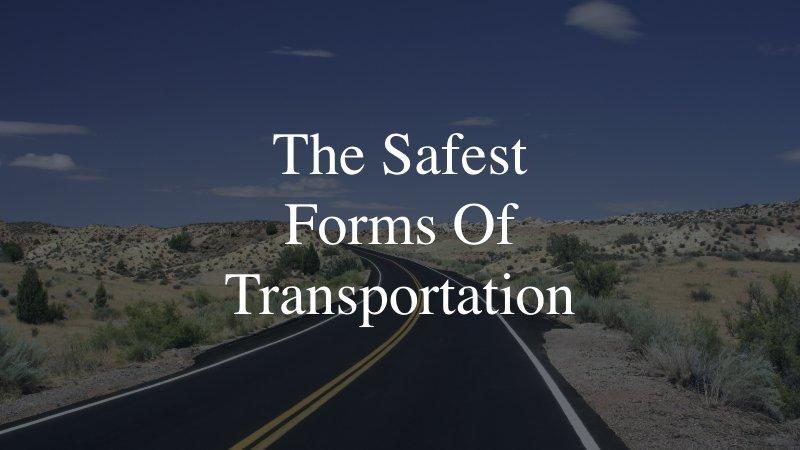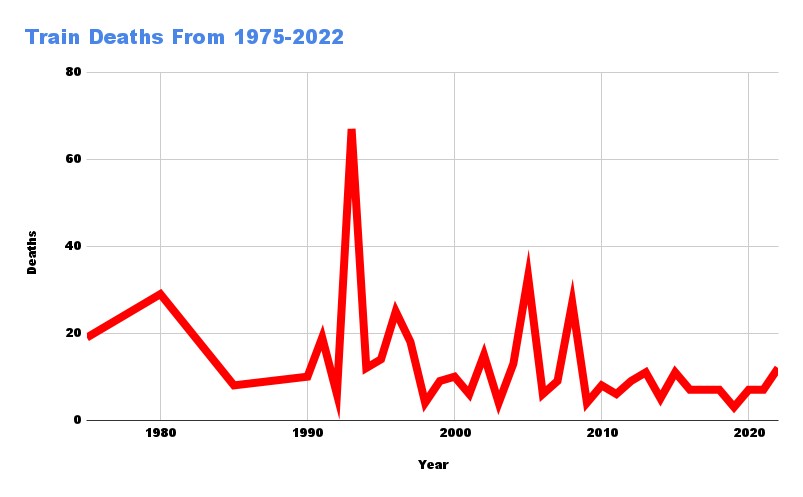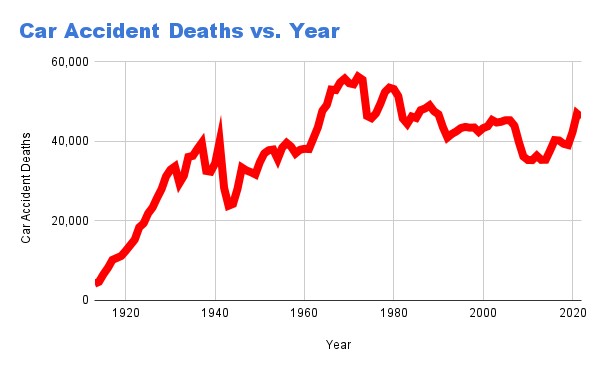What Is The Safest Form Of Travel? Commercial air travel stands out as the safest form of travel statistically, thanks to stringent safety regulations and advanced technology. At TRAVELS.EDU.VN, we help you understand the nuances of travel safety, ensuring your journeys are not only enjoyable but also secure, offering peace of mind with every mile, and delivering unparalleled vacation experiences. Our team helps you plan the safest and most delightful experiences, thinking about passenger safety and offering multiple safety measures.
1. Understanding Travel Safety Statistics
When planning a trip, understanding the safety aspects of different transportation modes is essential. Here’s a breakdown of what the statistics reveal about the safest and riskiest ways to travel:
- Air Travel: Commercial airlines have an impressive safety record, supported by detailed safety protocols.
- Bus Travel: Buses are also considered safe, with a lower accident rate than cars, thanks to professional drivers and established safety regulations.
- Train Travel: Trains offer a balance of safety and efficiency, making them a reliable choice for long-distance travel.
- Car Travel: Cars are more dangerous due to factors like driver error and traffic density, despite advancements in vehicle safety.
- Motorcycle Travel: Motorcycles have the highest accident rate, mainly because riders are more exposed and vulnerable.
These statistics help travelers make informed decisions to ensure safer journeys.
2. Why Is Air Travel Considered The Safest?
Air travel is often regarded as the safest way to travel. Several factors contribute to this perception:
- Stringent Regulations: The airline industry operates under strict global regulations, including regular aircraft inspections and pilot training, ensuring safety at every stage.
- Advanced Technology: Modern aircraft are equipped with sophisticated navigation and safety systems that reduce the risk of accidents.
- Professional Crews: Pilots and cabin crew undergo extensive training to manage various scenarios, prioritizing passenger safety.
- Low Accident Rate: Statistical data consistently shows that air travel has a minimal accident rate compared to other forms of transportation. According to the International Air Transport Association (IATA), the fatal accident rate in 2022 was 0.16 per million flights, highlighting the safety of flying.
- Continuous Improvement: The aviation industry continually improves safety through research, technology upgrades, and learning from past incidents.
 Airplane on a sunny day
Airplane on a sunny day
3. What Are The Statistics On Air Travel Safety?
The safety of air travel is supported by compelling statistics:
- Low Fatality Rate: From 2002 to 2020, the fatality rate in commercial aviation was approximately 0.01 deaths per 100 million passenger miles.
- Minimal Injuries: The injury rate in air travel is about 0.01 injuries per 100 million passenger miles, considerably lower than in car travel, which stands at 48 injuries for the same distance.
- Long-Term Safety: Airline researchers indicate that to experience a fatal accident based on 2022 data, one would need to fly every day for 25,214 years.
These numbers demonstrate the exceptional safety standards in the aviation industry, giving travelers confidence in their choice to fly.
4. How Does Bus Travel Compare In Terms Of Safety?
Bus travel is a safe way to travel, offering numerous advantages:
- Professional Drivers: Bus drivers undergo extensive training and adhere to strict regulations, reducing the risk of accidents.
- Safety Standards: The U.S. Department of Transportation (DOT) enforces stringent safety standards for buses, ensuring vehicles are well-maintained and equipped with safety features.
- Lower Accident Rate: Buses account for less than 10% of annual traffic fatalities in the United States, showing they are considerably safer than cars.
- Reduced Risk: According to the National Safety Council, buses have a much lower accident rate per mile compared to passenger vehicles.
- Community Benefits: Buses help reduce traffic congestion and emissions, making them a sustainable and safe option for group travel.
5. What Makes Train Travel A Relatively Safe Option?
Trains offer a unique blend of safety and convenience for travelers:
- Low Accident Rate: Train accidents are rare because of stringent safety measures and regulations.
- Technological Advancements: Modern trains use advanced technology to prevent collisions and ensure passenger safety.
- Comfort and Convenience: Trains provide a comfortable travel experience, allowing passengers to relax and enjoy the journey.
- Environmental Benefits: Trains are more environmentally friendly than cars or airplanes, supporting sustainable travel.
- Historical Safety: Despite occasional high-profile incidents, trains have consistently improved their safety record over time.
 Train Traveling in the Countryside
Train Traveling in the Countryside
6. What Are The Risks Associated With Car Travel?
Despite being a common mode of transport, cars come with significant risks:
- High Accident Rate: Cars contribute significantly to daily fatalities and injuries, with millions of accidents occurring each year.
- Driver Error: Driver error, including speeding, distracted driving, and drunk driving, is a leading cause of car accidents.
- Traffic Density: Higher traffic density increases the likelihood of accidents, especially in urban areas.
- Vulnerability: Car occupants are vulnerable in collisions, even with safety features like airbags and seatbelts.
- Statistical Data: Data shows that car accidents result in an average of 102 fatalities per day and over five million injuries annually in the U.S.
7. Why Is Motorcycle Travel Considered The Most Dangerous?
Motorcycle travel is statistically the most dangerous form of transportation for several reasons:
- Exposure: Motorcyclists are more exposed than car occupants, offering minimal protection in a crash.
- Accident Severity: Motorcycle accidents often result in severe injuries or fatalities due to the lack of protection.
- Visibility: Motorcycles are smaller and harder for other drivers to see, increasing the risk of collisions.
- Instability: Motorcycles are less stable than cars, making them more susceptible to accidents, especially in adverse weather conditions.
- Statistical Data: Motorcycle fatality rates are approximately 24 times higher than car accident rates per million miles traveled.
8. How Does Boat Travel Safety Vary Between Passenger And Recreational Boats?
Boat travel safety differs significantly between passenger and recreational boats:
- Passenger Boats: Passenger boats, like cruise ships and ferries, have stringent safety regulations and professional crews, ensuring a higher level of safety.
- Recreational Boats: Recreational boats are riskier due to factors like operator inexperience, lack of safety equipment, and alcohol consumption.
- Accident Statistics: Private recreational boating accidents account for 90% of boating fatalities, whereas passenger boats make up only about 10%.
- Safety Measures: Passenger boats adhere to strict maritime laws and conduct regular safety drills, whereas recreational boaters may neglect safety precautions.
- Risk Awareness: Understanding the differences in safety levels helps travelers make informed choices about their boating activities.
9. What Safety Measures Can Reduce The Risk In Any Mode Of Transportation?
Regardless of the mode of transportation, several safety measures can reduce the risk of accidents and injuries:
- Seat Belts: Always wear a seat belt when traveling by car or bus, as it significantly reduces the risk of severe injury in a collision.
- Helmets: Wear a helmet when riding a motorcycle, bicycle, or participating in water sports to protect against head injuries.
- Avoid Distractions: Refrain from using electronic devices or engaging in other distractions while driving or operating any vehicle.
- Follow Traffic Laws: Adhere to traffic laws, speed limits, and other regulations to prevent accidents.
- Stay Sober: Never drive or operate any vehicle under the influence of alcohol or drugs.
- Regular Maintenance: Ensure vehicles are well-maintained and regularly inspected for safety issues.
- Weather Awareness: Check weather conditions before traveling and adjust plans accordingly to avoid hazardous situations.
- Emergency Preparedness: Carry a first-aid kit and know how to respond in case of an emergency.
 Car Safety: Buckle up!
Car Safety: Buckle up!
10. How Can TRAVELS.EDU.VN Help Ensure A Safe Travel Experience?
At TRAVELS.EDU.VN, we prioritize your safety and comfort, ensuring a worry-free travel experience to Napa Valley. Here’s how we can assist you:
- Expert Planning: Our travel experts meticulously plan every detail of your trip, considering the safest routes, accommodations, and activities.
- Reliable Transportation: We arrange for safe and reliable transportation options, including private cars, buses, and reputable airlines.
- Safety Information: We provide comprehensive safety information and guidelines for your destination, keeping you informed and prepared.
- Emergency Support: Our support team is available 24/7 to assist you with any emergencies or concerns during your trip.
- Trusted Partners: We partner with trusted hotels, tour operators, and service providers who adhere to strict safety standards.
- Customized Itineraries: We tailor your itinerary to match your preferences and safety needs, ensuring a personalized and secure travel experience.
- Peace of Mind: With TRAVELS.EDU.VN, you can relax and enjoy your trip knowing that your safety is our top priority.
Ready to explore Napa Valley with peace of mind? Contact TRAVELS.EDU.VN today for expert advice and assistance in planning your safe and unforgettable trip.
Contact Us:
- Address: 123 Main St, Napa, CA 94559, United States
- WhatsApp: +1 (707) 257-5400
- Website: TRAVELS.EDU.VN
Let us help you create memories that last a lifetime, safely and securely.
FAQ: Travel Safety
1. Which mode of transportation has the fewest accidents?
Commercial air travel has the fewest accidents per mile traveled, making it the safest mode of transportation. Stringent regulations and advanced technology contribute to its low accident rate.
2. What is the most dangerous way to travel?
Motorcycle travel is statistically the most dangerous due to the rider’s exposure and the higher risk of severe injuries in accidents.
3. Is it safer to travel by car or train?
Train travel is generally safer than car travel. Trains have a lower accident rate and offer a more controlled environment compared to the variability and risks associated with driving.
4. How can I ensure my safety while traveling by car?
To ensure safety while traveling by car, always wear a seat belt, avoid distractions, follow traffic laws, maintain your vehicle regularly, and never drive under the influence of alcohol or drugs.
5. Are buses a safe way to travel?
Yes, buses are a safe way to travel. Professional drivers, strict safety standards, and regulated maintenance contribute to a lower accident rate compared to passenger vehicles.
6. What should I do in case of a travel emergency?
In case of a travel emergency, stay calm, assess the situation, contact local emergency services if needed, and inform your travel provider or insurance company as soon as possible.
7. How does weather affect travel safety?
Adverse weather conditions like rain, snow, and fog can significantly increase the risk of accidents. Check the weather forecast before traveling and adjust your plans to avoid hazardous situations.
8. What are the key safety features to look for in a vehicle?
Key safety features to look for in a vehicle include anti-lock brakes (ABS), electronic stability control (ESC), airbags, tire pressure monitoring systems (TPMS), and advanced driver-assistance systems (ADAS) like lane departure warning and automatic emergency braking.
9. How does TRAVELS.EDU.VN ensure passenger safety during tours?
TRAVELS.EDU.VN ensures passenger safety by using reliable transportation, partnering with trusted service providers, providing safety guidelines, and offering 24/7 emergency support.
10. What are the benefits of using a travel agency for planning a safe trip?
Using a travel agency like travels.edu.vn provides expert planning, reliable transportation arrangements, access to trusted partners, and comprehensive support, ensuring a safer and more enjoyable travel experience.
